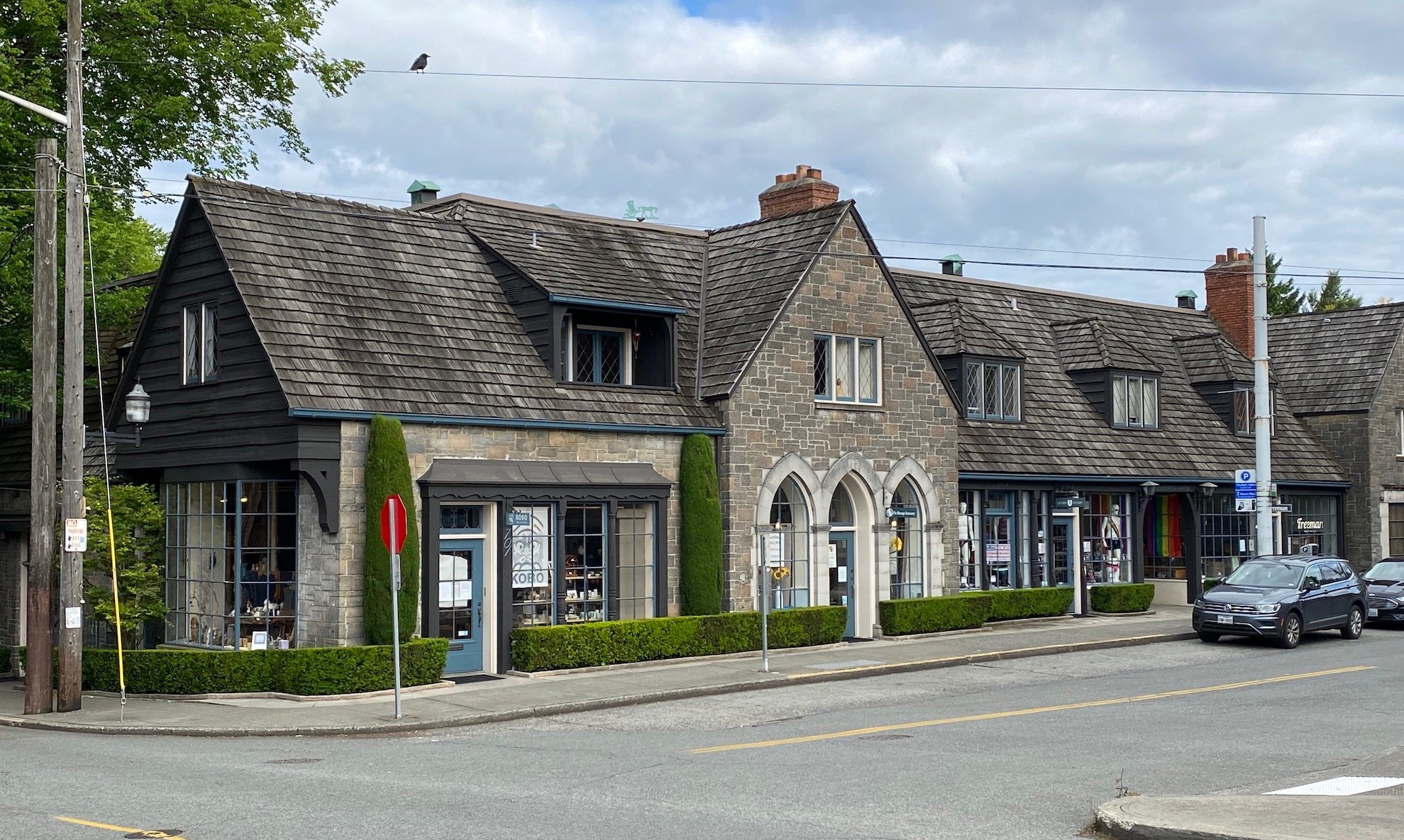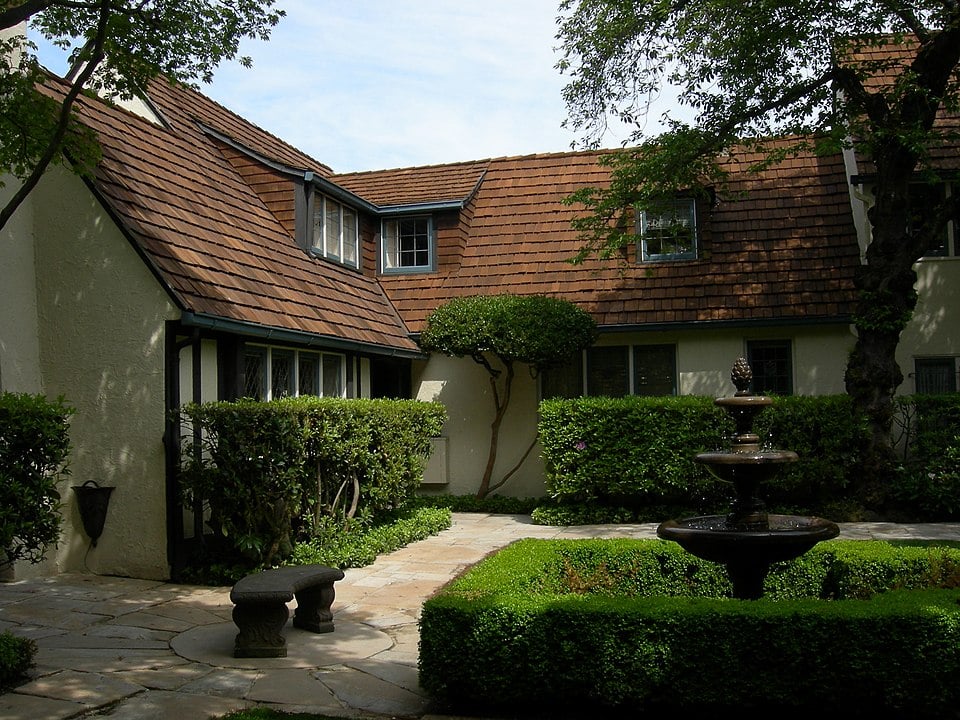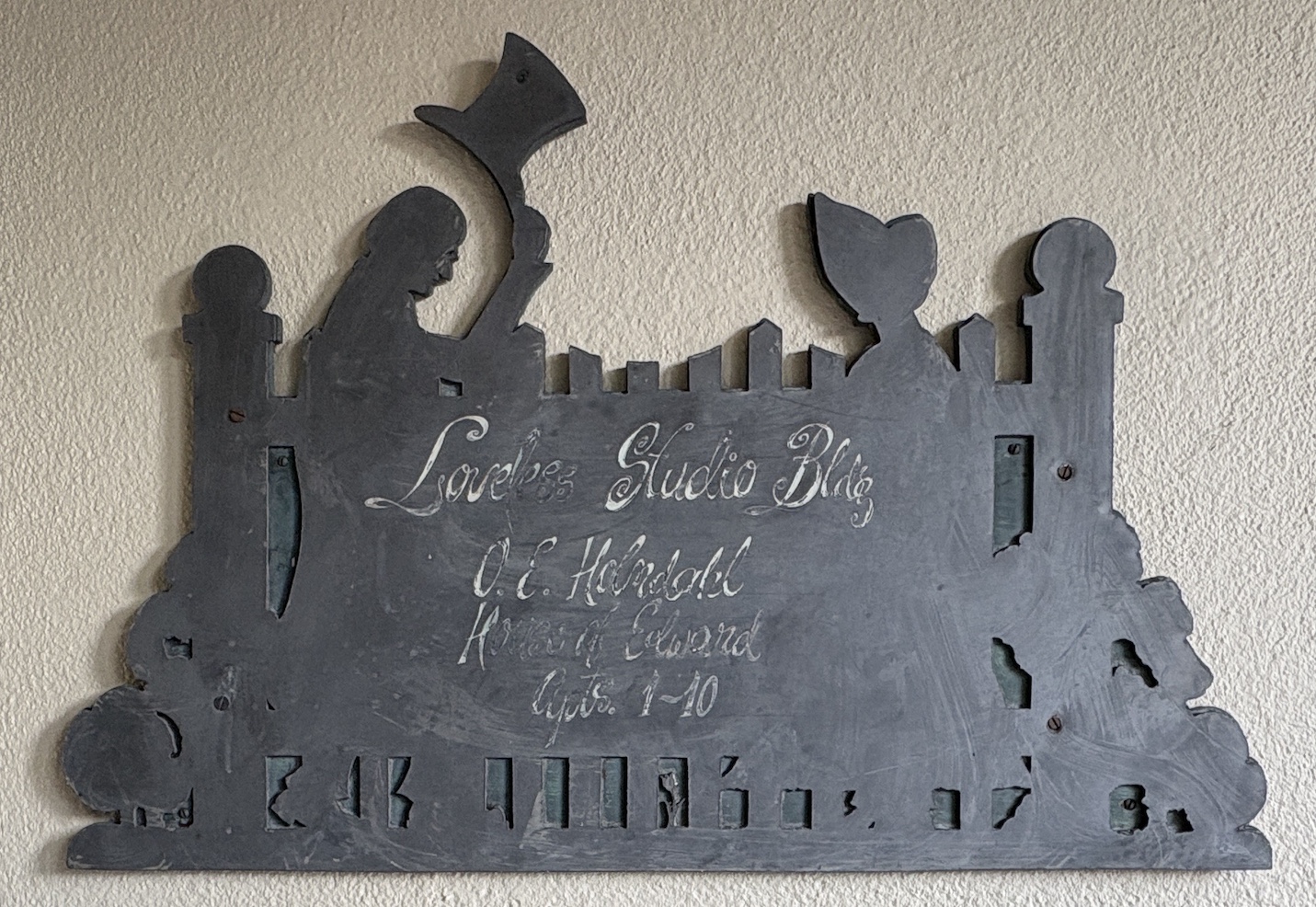Loveless Studio Building — Charming Architecture


Located at 711 Broadway East on the north end of Broadway, the Loveless Studio Building is one of the area’s most architecturally beloved and historically rich properties. Built in 1933 by renowned architect Arthur Loveless, this iconic Tudor Revival-style apartment and commercial building combines classic charm, artistic legacy, and urban convenience—making it a rare find for architecture enthusiasts and real estate seekers alike.
The Loveless Building is a standout example of Tudor and Gothic Revival architecture blended with a touch of storybook whimsy. Constructed with brick, sandstone, and stucco, the building features charming dormers, steep gabled roofs, leaded windows, and half-timber accents—classic elements that not only reflect historic craftsmanship but also serve functional purposes, like rain deflection and ample natural light in Seattle’s gray climate.


Past the ornate iron gate, residents and visitors step into a serene garden courtyard complete with a fountain, stucco walls, and lush landscaping. In 1961, the building was honored with a Citation for Excellence by the American Institute of Architects, affirming its status as a landmark of thoughtful design and timeless beauty.
Nestled within the heart of the Loveless Building, this charming enclosed courtyard blends timeless English garden design with the building’s signature whimsical architecture—a serene escape rich with character and creativity.

Today, the Loveless Building remains a mixed-use property housing residences, boutique shops, and restaurants that reflect Capitol Hill’s creative and entrepreneurial spirit.
The Loveless Building is a rare and enchanting blend of architectural styles—Tudor Revival, Gothic, and even elements of Storybook architecture—all brought to life by celebrated Seattle architect Arthur Loveless in 1933.
“Grey days require ample windows surface; much rain would suggest roofs of fair pitch to shed the waters; our cool summers do not require much cover for out-door living…” — Arthur Loveless
Originally called the Studio Building, the Loveless Building evokes the look and feel of a charming English village. Hallmarks of Tudor Revival style are found throughout: a brick façade, leaded glass windows, and half-timbered interior walls. The second story showcases dormers and steeply pitched gabled roofs, designed not just for beauty, but to handle Seattle’s rainy climate.

The building also incorporates distinct Gothic architectural features, most notably the pointed arches found in windows near The Massage Sanctuary. These arched forms add vertical elegance, while tracery—delicate, ornamental window lines—offers a subtle nod to European cathedrals. Though traditionally made from stone, the tracery here adds a lace-like quality to the glasswork.
What makes the Loveless Building especially magical is how its Tudor and Gothic elements are arranged with a sense of whimsy and romance. The varied rooflines, turret, and lush courtyard all contribute to what many recognize as Storybook architecture—a playful, fairy tale–inspired style that makes the building feel like something out of a children’s storybook. Step through the iron gate, and you’re transported to a hidden world in the heart of Capitol Hill.
The Loveless Studio Building at the north end of Broadway is home to a vibrant collection of locally owned shops, eateries, and galleries, adding to its appeal as a destination for residents, shoppers, and tourists alike. Here's a closer look at the businesses that make this historic building so dynamic:
🥖 The French Guys – Authentic French pastries and quiche
🍽️ Cook Weaver – Inventive Eurasian cuisine with a historic twist
🎨 Kobo Shop & Gallery – Japanese and Pacific Northwest artisan gifts
💆♀️ The Massage Sanctuary – Therapeutic massages in a tranquil space
🩲 underU4men – Premium men’s underwear boutique
💇♀️ Dawson Salon – Hair, lashes, and nail services
🖼️ Galerie Orsay Paris-Seattle
☕ Joe Bar (closed)
🛍️ Freeman (moved) — Raingear and more

Two of the notable tenants were O. E. Holmdahl and House of Edward. Otto Holmdahl was a landscape architect with a love for local plants. Among his works are the grounds of the World's Fair of 1962 and the landscaping of the James G. Eddy House.
House of Edward was a hair salon. Owned by Edward White, the salon catered to many politically and socially connected residents of Seattle.
The sign above reads:
Loveless Studio Bldg
O. E. Holmdahl
House of Edward
Apts. 1—10
With a Walk Score of 95, the Loveless Building is officially a Walker’s Paradise, ideal for buyers or renters looking for car-free living. The building sits just steps from the Broadway Y-intersection, near landmarks like the Harvard Exit Theatre, Capitol Hill Library, and the Harvard-Belmont Historic District. Public transit options and bike lanes also score high, making commuting to downtown or the University District a breeze.
The Loveless Building is a proud part of the Harvard-Belmont Landmark District, listed on the National Register of Historic Places since 1982. This area is known for its stunning architecture and historic mansions, offering both residents and visitors a glimpse into Seattle’s elegant past.

For buyers, renters, and investors, the Loveless Building offers rare access to Seattle’s architectural history paired with walkable amenities and cultural charm. Whether you're exploring the shops on Broadway, attending an event at the nearby Rainier Chapter House, or simply enjoying the quiet beauty of the private courtyard, this building represents the best of Capitol Hill’s blend of urban energy and classic design.
The Loveless Studio Building is just one gem in Seattle’s vibrant Capitol Hill neighborhood. From historic districts and iconic architecture to local cafés, arts venues, and green spaces, Capitol Hill offers something for everyone—whether you're strolling down Broadway, exploring Volunteer Park, or discovering hidden courtyards like this one.
Share My QR |
|
We firmly believe that the internet should be available and accessible to anyone, and are committed to providing a website that is accessible to the widest possible audience, regardless of circumstance and ability.
To fulfill this, we aim to adhere as strictly as possible to the World Wide Web Consortium’s (W3C) Web Content Accessibility Guidelines 2.1 (WCAG 2.1) at the AA level. These guidelines explain how to make web content accessible to people with a wide array of disabilities. Complying with those guidelines helps us ensure that the website is accessible to all people: blind people, people with motor impairments, visual impairment, cognitive disabilities, and more.
This website utilizes various technologies that are meant to make it as accessible as possible at all times. We utilize an accessibility interface that allows persons with specific disabilities to adjust the website’s UI (user interface) and design it to their personal needs.
Additionally, the website utilizes an AI-based application that runs in the background and optimizes its accessibility level constantly. This application remediates the website’s HTML, adapts Its functionality and behavior for screen-readers used by the blind users, and for keyboard functions used by individuals with motor impairments.
If you’ve found a malfunction or have ideas for improvement, we’ll be happy to hear from you. You can reach out to the website’s operators by using the following email [email protected]
Our website implements the ARIA attributes (Accessible Rich Internet Applications) technique, alongside various different behavioral changes, to ensure blind users visiting with screen-readers are able to read, comprehend, and enjoy the website’s functions. As soon as a user with a screen-reader enters your site, they immediately receive a prompt to enter the Screen-Reader Profile so they can browse and operate your site effectively. Here’s how our website covers some of the most important screen-reader requirements, alongside console screenshots of code examples:
Screen-reader optimization: we run a background process that learns the website’s components from top to bottom, to ensure ongoing compliance even when updating the website. In this process, we provide screen-readers with meaningful data using the ARIA set of attributes. For example, we provide accurate form labels; descriptions for actionable icons (social media icons, search icons, cart icons, etc.); validation guidance for form inputs; element roles such as buttons, menus, modal dialogues (popups), and others. Additionally, the background process scans all of the website’s images and provides an accurate and meaningful image-object-recognition-based description as an ALT (alternate text) tag for images that are not described. It will also extract texts that are embedded within the image, using an OCR (optical character recognition) technology. To turn on screen-reader adjustments at any time, users need only to press the Alt+1 keyboard combination. Screen-reader users also get automatic announcements to turn the Screen-reader mode on as soon as they enter the website.
These adjustments are compatible with all popular screen readers, including JAWS and NVDA.
Keyboard navigation optimization: The background process also adjusts the website’s HTML, and adds various behaviors using JavaScript code to make the website operable by the keyboard. This includes the ability to navigate the website using the Tab and Shift+Tab keys, operate dropdowns with the arrow keys, close them with Esc, trigger buttons and links using the Enter key, navigate between radio and checkbox elements using the arrow keys, and fill them in with the Spacebar or Enter key.Additionally, keyboard users will find quick-navigation and content-skip menus, available at any time by clicking Alt+1, or as the first elements of the site while navigating with the keyboard. The background process also handles triggered popups by moving the keyboard focus towards them as soon as they appear, and not allow the focus drift outside of it.
Users can also use shortcuts such as “M” (menus), “H” (headings), “F” (forms), “B” (buttons), and “G” (graphics) to jump to specific elements.
We aim to support the widest array of browsers and assistive technologies as possible, so our users can choose the best fitting tools for them, with as few limitations as possible. Therefore, we have worked very hard to be able to support all major systems that comprise over 95% of the user market share including Google Chrome, Mozilla Firefox, Apple Safari, Opera and Microsoft Edge, JAWS and NVDA (screen readers), both for Windows and for MAC users.
Despite our very best efforts to allow anybody to adjust the website to their needs, there may still be pages or sections that are not fully accessible, are in the process of becoming accessible, or are lacking an adequate technological solution to make them accessible. Still, we are continually improving our accessibility, adding, updating and improving its options and features, and developing and adopting new technologies. All this is meant to reach the optimal level of accessibility, following technological advancements. For any assistance, please reach out to [email protected]